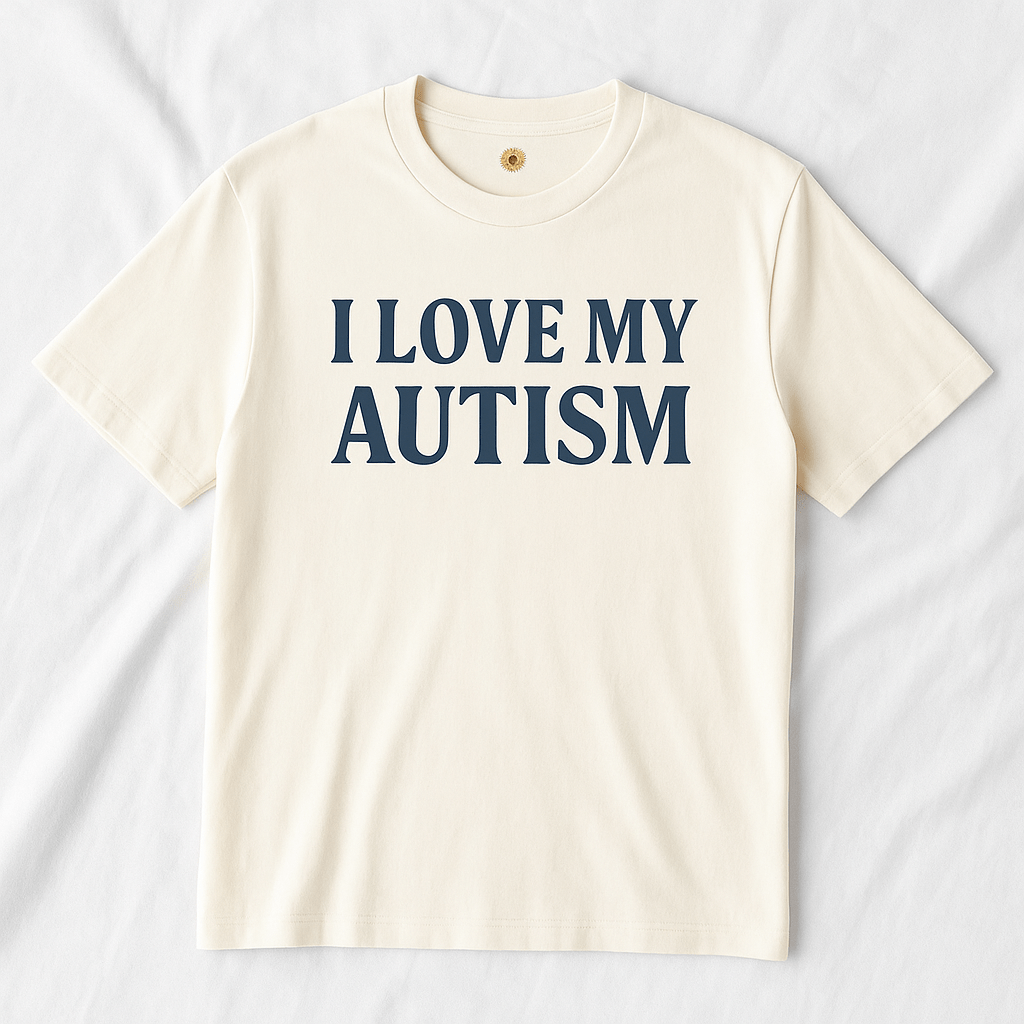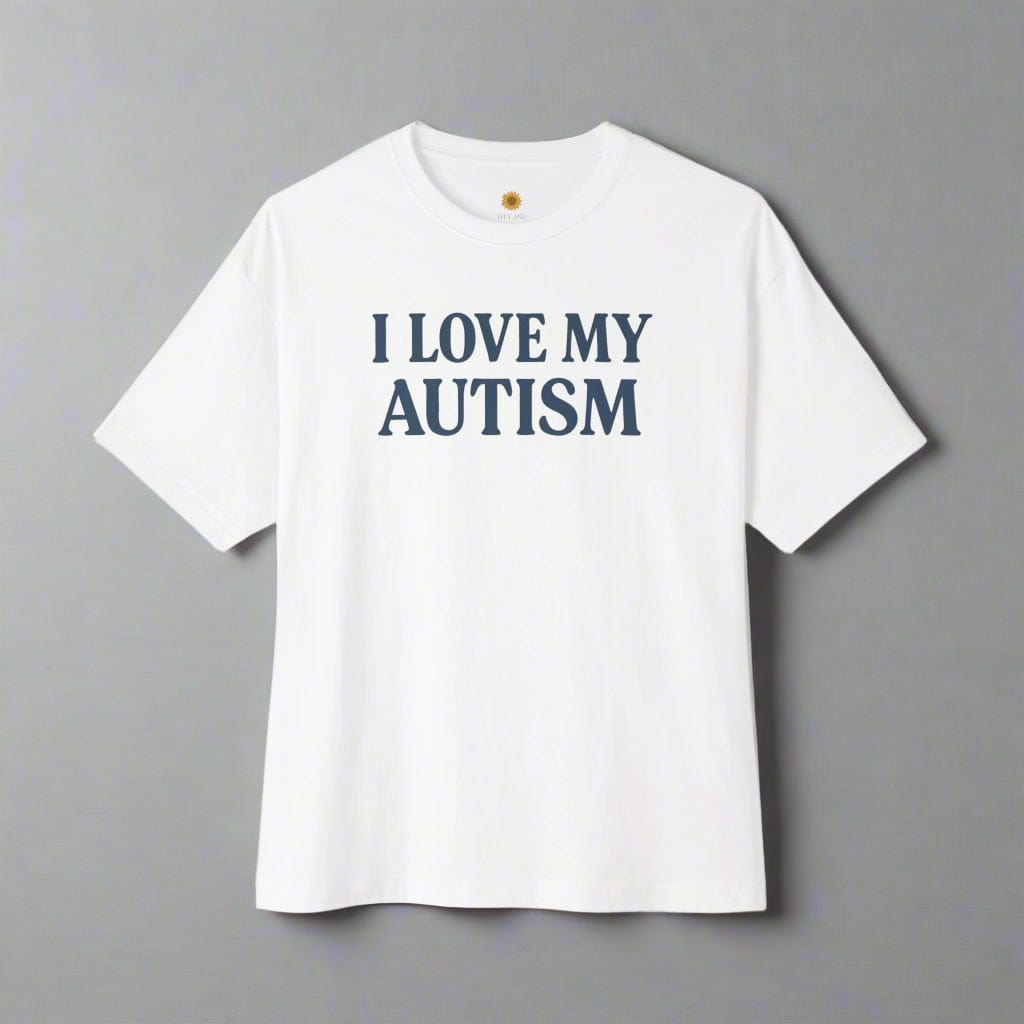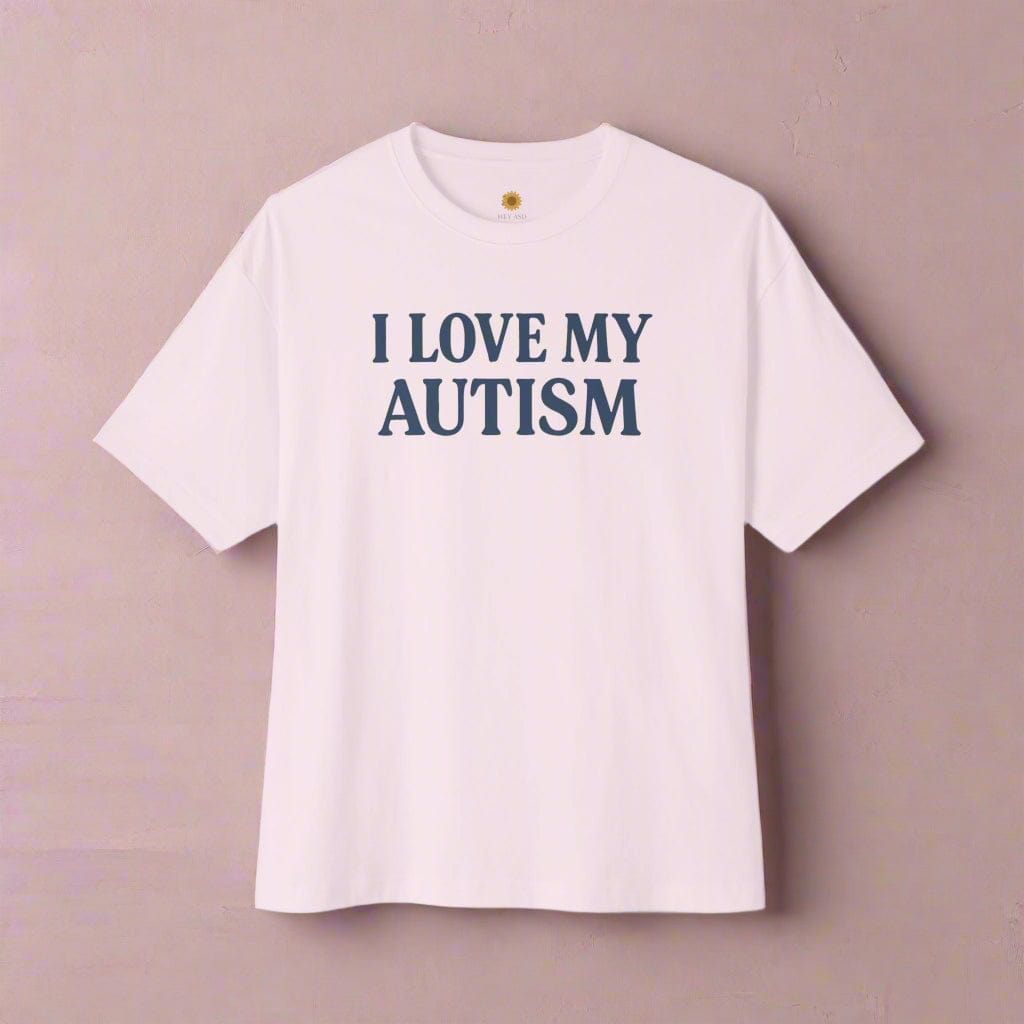Autistic Fatigue: A Guide to Managing Exhaustion and Low Energy in Autism
Autistic fatigue is more than feeling tired. It’s a deep exhaustion shaped by sensory overload, masking, and constant demands. This guide explains what it feels like, how it differs from ordinary tiredness, and the strategies autistic adults use to protect energy and recover.

Written by the HeyASD Editorial Team
If you’ve ever come home from a social event or long workday and felt like you’ve been hit by a truck — not just tired, but fully depleted — you may have experienced autistic fatigue.
For many autistic adults, this isn’t about a late night or skipped coffee. It’s a unique exhaustion that comes from living in a world built for neurotypicals: masking, filtering sensory overload, pushing through social expectations, and trying to keep up with constant demands.
Research suggests that up to 80% of autistic people regularly face this type of fatigue. Unlike ordinary tiredness, it doesn’t vanish with one good night’s sleep. It’s a whole-body, whole-mind experience — and it matters, because left unchecked, autistic fatigue can spiral into burnout and long-term health consequences.
This guide explores what autistic fatigue feels like, how to recognize the signs, and simple but effective strategies for recovery. It’s written for autistic adults (by someone who knows the feeling of running out of spoons), as well as for families and allies who want to understand.
Understanding Autistic Fatigue: Key Concepts and Definitions
Core Definitions
Autistic fatigue describes profound, persistent physical, mental, and emotional exhaustion that disproportionately affects autistic individuals due to unique challenges they face in daily life. This condition encompasses three distinct but interconnected components:
-
Physical exhaustion: Severe tiredness not explained by illness or overexertion, often requiring extended recovery periods
-
Mental fatigue: Brain fog, difficulty processing information, and impaired executive functioning
-
Emotional exhaustion: Depletion from continuous effort to regulate emotions and navigate social situations
Related terminology includes autistic burnout (the escalation of chronic fatigue into clinical syndrome), sensory fatigue (exhaustion from processing overwhelming sensory input), masking exhaustion (depletion from suppressing autistic traits), and energy accounting (systematic management of limited energy resources).
Concept Relationships
Autistic fatigue connects directly to autistic burnout progression, where chronic stress and inadequate support lead to pervasive, long-term exhaustion lasting three months or longer. The condition interlinks with sensory processing differences, as autistic people often experience hypersensitivity to light, sound, touch, and smell, rapidly depleting energy levels. Sensory sensitivity can influence emotional regulation and pain perception, and is associated with an increased risk of chronic pain and fatigue in autistic individuals.
Executive functioning challenges compound the problem, as prolonged stress impairs planning, organizing, and problem-solving abilities. Many autistic adults also experience co-occurring conditions like chronic fatigue syndrome, fibromyalgia, irritable bowel syndrome, and central sensitivity syndromes, creating additional layers of complexity requiring specialized understanding.
Understanding Autistic Burnout
Autistic burnout is a profound state of physical, mental, and emotional exhaustion that arises from prolonged stress, sensory overload, and the relentless effort to adapt to environments that may not accommodate autistic traits. Unlike ordinary tiredness, autistic burnout is marked by a severe depletion of energy that can significantly disrupt daily life. Many autistic adults experience burnout after extended periods of masking—suppressing their natural behaviors to fit in socially—which can lead to chronic fatigue, emotional exhaustion, and even conditions like chronic fatigue syndrome.
- For many of us, home is the only place we can truly exhale; soft textures, quiet, and a sensory blanket that just feels right. Explore what brings calm.
Physical symptoms of autistic burnout often include muscle tension, headaches, and a general sense of being unwell. Emotionally, individuals may notice increased irritability, anxiety, and a reduced ability to cope with everyday stressors. Sensory overload can intensify these symptoms, making it even harder to recover. The continuous effort required to manage social expectations and sensory input can push autistic people into a cycle of fatigue and burnout.
Recognizing the early signs of autistic burnout—such as heightened sensitivity, withdrawal from social activities, and persistent fatigue—is crucial. Seeking support, whether from family, friends, or professionals, and implementing coping strategies tailored to individual needs can help manage symptoms and support recovery. Understanding autistic burnout as a serious, multifaceted condition is the first step toward effective intervention and improved well-being.
Common Signs of Autistic Fatigue
Autistic fatigue can present in a variety of ways, often extending beyond simple tiredness. Physical symptoms such as chronic fatigue, frequent headaches, and disrupted sleep patterns are common among autistic adults. Sensory overload—when lights, sounds, or other sensory input become overwhelming—can quickly lead to feelings of exhaustion and being overwhelmed.
Emotional exhaustion is another hallmark, with many autistic people experiencing increased irritability, mood swings, and a tendency to withdraw from social situations. Digestive issues, including irritable bowel syndrome, are also frequently reported and can further drain energy levels. These symptoms can make it difficult to manage daily tasks and maintain relationships.
Recognizing these common signs early is essential for preventing burnout. Practical strategies such as prioritizing self-care, setting boundaries, and seeking support from family members, online communities, or mental health professionals can make a significant difference. By understanding and addressing these symptoms, autistic individuals can take proactive steps to reduce stress, manage fatigue, and maintain their overall well-being.
Executive Functioning and Autistic Fatigue
Executive functioning encompasses the mental skills needed to plan, organize, and complete daily tasks. For many autistic individuals, challenges with executive functioning can contribute significantly to autistic fatigue. Difficulties with time management, organization, and self-regulation often lead to increased stress levels and make it harder to conserve energy throughout the day.
To help manage these challenges, visual supports such as schedules, checklists, and visual reminders can be invaluable. Breaking tasks into smaller, more manageable steps and prioritizing activities based on current energy levels can also help prevent burnout. By using these strategies, autistic people can reduce anxiety, streamline daily routines, and better manage their energy.
Implementing practical supports not only eases the burden of daily tasks but also helps reduce stress and improve overall well-being. With the right tools and approaches, autistic individuals can navigate executive functioning challenges more effectively and maintain a healthier balance in their daily lives.
Emotional Exhaustion and Regulation
Emotional exhaustion is a frequent experience for autistic individuals, especially those who regularly face sensory overload and ongoing stress. Managing emotions can be particularly challenging, as autistic people may find it difficult to regulate feelings of anxiety, frustration, or overwhelm. This ongoing emotional strain can contribute to both fatigue and burnout.
Building emotional resilience is key to coping with these challenges. Practicing self-care, engaging in activities that bring joy, and seeking support from trusted individuals can help restore emotional balance. Techniques such as deep breathing, mindfulness, and regular physical activity are effective ways to regulate emotions and reduce stress levels.
By prioritizing emotional regulation, autistic individuals can better manage emotional exhaustion, prevent burnout, and enhance their overall quality of life. Recognizing when to seek support and taking proactive steps to care for emotional health are essential components of long-term well-being.
Why Autistic Fatigue is Critical to Address in Autism Care
Statistical evidence demonstrates that up to 80% of autistic adults experience chronic fatigue, with particularly high rates among those who engage in masking behaviors to blend into neurotypical environments. Current research by Grant et al. and other autism researchers indicates this represents a significant public health concern affecting quality of life across multiple domains.
The impact extends far beyond feeling tired - autistic fatigue significantly affects employment outcomes, with many individuals unable to maintain full-time work due to energy limitations. It influences daily tasks, social relationships, and overall well being, often leading to withdrawal from previously enjoyed activities and increased isolation. Untreated autistic fatigue can also negatively impact physical health, compounding the effects on mental and emotional well-being.
The connection to mental health outcomes creates additional concerns, as chronic stress and prolonged fatigue increase risks of depression and anxiety. Without appropriate support and recognition, autistic individuals may face misdiagnosis, inappropriate treatments, and escalating symptoms that could have been prevented with early intervention. Providing the right support, tailored to individual needs, is crucial to prevent escalation and improve outcomes.
Economic costs on healthcare systems multiply when autistic fatigue remains unrecognized, leading to repeated medical consultations, ineffective treatments, and missed opportunities for targeted interventions that address root causes rather than secondary symptoms.
Autistic Fatigue vs. Regular Tiredness: Key Differences Comparison
|
Aspect |
Regular Tiredness |
Autistic Fatigue |
|---|---|---|
|
Duration |
Hours to 1-2 days |
Weeks to months |
|
Primary Causes |
Sleep deprivation, physical exertion |
Sensory overload, masking, social demands |
|
Recovery Methods |
Rest, sleep |
Environmental changes, reduced demands |
|
Physical Symptoms |
General tiredness |
Extreme fatigue, muscle tension, headaches |
|
Cognitive Impact |
Mild concentration issues |
Severe brain fog, executive dysfunction |
|
Recovery Time |
8-12 hours sleep |
Days to weeks of reduced stimulation |
|
Underlying Mechanism |
Energy depletion |
Nervous system overwhelm |
|
Triggers |
Overwork, late nights |
Sensory environments, social interaction |
The main difference lies in the neurological basis - while regular tiredness stems from energy depletion, autistic fatigue results from nervous system overwhelm requiring fundamentally different recovery approaches.
While getting enough sleep is important for everyone, autistic individuals may need additional strategies beyond enough sleep to manage fatigue and emotional exhaustion.
Step-by-Step Guide to Managing Autistic Fatigue
Step 1: Identify Your Fatigue Triggers and Patterns
Begin by systematically tracking environments, activities, and situations that drain your energy levels. Recognizing personal energy levels can improve pacing and reduce overload. Create a fatigue diary documenting:
-
Sensory environments: Note lighting, noise levels, crowds, textures, and smells that increase stress levels
-
Social demands: Record duration and intensity of social situations, especially those requiring masking
-
Daily tasks: Identify which activities consume how much energy and impact executive functioning
Recognize early warning signs before reaching extreme fatigue: increased irritability, heightened sensory sensitivities, difficulty with routine tasks, and decreased emotional regulation. Many autistic people report that catching these common signs in early stages allows for proactive intervention rather than reactive crisis management.
Use visual supports like energy accounting charts or spoon theory applications to quantify energy expenditure throughout the day. Visual or written communication tools can lessen processing demands during stress. This systematic approach helps identify patterns and plan accordingly.
Step 2: Implement Energy Conservation Strategies
Focus on reducing demands while creating supportive environments that minimize continuous effort:
Sensory regulation techniques:
-
Invest in noise-cancelling headphones for overwhelming auditory environments
-
Use weighted blankets or compression clothing for calming sensory input
-
Adjust lighting with dimmers or colored bulbs to reduce visual stress
-
Create designated quiet spaces for decompression
Reduce masking behaviors in safe environments by allowing natural autistic traits to emerge. This includes permitting stimming, using direct communication styles, and avoiding forced eye contact when unnecessary.
Routine restructuring involves building regular breaks into structured routines, using visual schedules to reduce mental load, and establishing predictable patterns that support the nervous system.
Set clear boundaries around non-essential commitments, learning to decline social invitations or work requests when energy reserves are low. Practice saying “I need to check my energy levels before committing” as a self advocacy strategy.
Step 3: Create Recovery and Prevention Plans
Design comprehensive systems that support long-term sustainability:
Establish “low-demand” days specifically for nervous system reset. These involve minimal sensory input, reduced social interaction, and permission to engage only in activities that bring joy and restoration.
Create sensory-friendly spaces at home and work through reasonable adjustments like flexible lighting, quiet zones, and reduced environmental stimulation. Creating a sensory-friendly living space can support daily regulation. Advocate for workplace accommodations that recognize unique challenges faced by autistic individuals.
Build support networks within autism-affirming online communities and local groups where masking isn’t required. Building a support network can provide emotional validation and practical advice to parents managing emotional exhaustion. Seek support from others who understand the experience and can provide practical strategies without judgment.
Monitor progress using standardized measures of energy levels, mood tracking, and quality of life indicators. Regular assessment helps identify what strategies provide the most significant impact on daily functioning.
Building Emotional Resilience
Developing emotional resilience is vital for autistic individuals as they navigate the unique challenges of daily life. This process involves cultivating a growth mindset, practicing self-compassion, and engaging in activities that support emotional regulation. Learning to identify emotional triggers and developing personalized coping strategies can empower autistic people to handle stress more effectively.
Seeking support from mental health professionals, connecting with others who share similar experiences, and building a sense of community can also strengthen emotional resilience and reduce feelings of isolation. By focusing on these strategies, autistic individuals can better manage stress, reduce anxiety, and improve their overall well-being.
It’s important to remember that building emotional resilience is an ongoing journey that requires patience and support. With the right coping strategies and a supportive environment, autistic people can develop the resilience needed to thrive and enjoy a more fulfilling daily life.
Energy Conversation Strategies for Autistic Fatigue
Managing autistic fatigue isn’t about “pushing through” — it’s about conserving energy so it lasts where it matters most. Many of us use a mix of sensory tools, routines, and boundaries to keep our reserves steady.
Sensory regulation techniques
-
Noise-cancelling headphones are more than tech gear — they’re a shield in chaotic spaces.
-
Weighted sensory blankets or hoodies with soft fabrics can ground the body, easing tension and helping recovery. (We love them so much we built our own sensory-friendly blanket collection.)
-
Gentle lighting — lamps, dimmers, or warm bulbs — can calm overstimulation that builds unnoticed in harsh environments.
Reducing masking where safe
Giving yourself permission to stim, communicate directly, or skip eye contact can free up enormous energy. It’s not weakness — it’s self-preservation.
Routine restructuring
Predictability is a gift to the nervous system. Visual schedules, energy accounting tools, or simply planning recovery days after demanding events can make life far more sustainable.
And perhaps most important: practice saying “I need to check my energy before committing.” Boundaries protect your future self.
Real-Life Case Study: Sarah’s Journey from Autistic Burnout to Balance
When Sarah, a 32-year-old autistic adult, hit burnout, it felt like her life had collapsed. Even basic routines — getting out of bed, making meals, tolerating light in the kitchen — were impossible. She’d been pushing through open-plan office noise, long commutes, and weekend social obligations until her body simply gave out.
What helped wasn’t “more resilience.” It was real, tangible changes:
-
Tracking energy with a spoon-theory app showed that office meetings and late-night dinners were her biggest drains.
-
Workplace accommodations — headphones, flexible hours, and a quieter workspace — created breathing room.
-
Sensory supports at home — blackout curtains, a weighted blanket, and a designated quiet corner — gave her nervous system the chance to reset.
-
Boundaries — saying no to 70% of social invites and asking family to respect her limits — preserved the little energy she did have.
Six months later, Sarah wasn’t “cured,” but she was living again: working part-time, enjoying slow weekends, and recovering faster after stressful days. Her story is a reminder that recovery doesn’t come from willpower alone — it comes from environments that honor autistic energy.
Frequently Asked Questions About Autistic Fatigue
How long does autistic fatigue last?
Autistic fatigue can last from a few days to several months, depending on severity and recovery strategies. Mild episodes may resolve with rest, while severe autistic burnout can persist for months without environmental changes and professional support.
Is autistic fatigue the same as depression?
No. Autistic fatigue is neurological overwhelm; depression is a mood disorder. They can co-occur, and untreated fatigue may increase the risk of developing depression.
Can medication help with autistic fatigue?
There is no direct medication for autistic fatigue. Some treatments may ease anxiety or sleep problems, but environmental adjustments and stress reduction remain most effective.
How do I explain autistic fatigue to my employer?
Frame it as a need for practical accommodations, not a medical lecture. Request adjustments like flexible hours, sensory modifications, or written communication, linking them to better productivity.
Can children experience autistic fatigue?
Yes, children can experience autistic fatigue, but it often looks different from adults. Signs may include meltdowns, school refusal, or regression in skills. Like adults, children benefit from predictable routines and sensory support.
Join Hundreds of Autistic Adults Feeling
More Comfort in Their Own Skin
Use code WELCOME10 for 10% off your first order.
Start Your Comfort JourneyConclusion: Honor Your Energy
Autistic fatigue is real and valid. It isn’t laziness or a failure of mindset. It’s a logical response to ongoing overload. The path forward is kind and practical: recognise early signs, pace your week, reduce masking where it’s safe, and build recovery into your routine.
If you’d like calming, sensory-considerate supports designed by and for autistic adults, explore our sensory blankets and the subtle, comfortable Autistic Embroidered Hoodie. For sustainable income ideas that respect energy, see Best Side Hustles for Autistic Adults.
Your energy is precious. Guard it, honour it, and give yourself permission to rest.



















